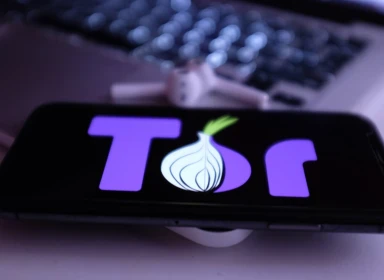
Introduction
The rise of cryptocurrencies has created unprecedented opportunities in finance, but it has also attracted sophisticated cybercriminals. Among the most notorious offenders are state-backed hacker groups, particularly from North Korea, whose operations fund government programs, including military advancements. Over the last decade, these hackers have stolen billions in cryptocurrency, leaving a trail of financial ruin and regulatory challenges. One of the most significant incidents in this saga is the 2019 Ethereum heist, orchestrated by North Korean groups, which exposed vulnerabilities in digital asset platforms and the global financial system.
The 2019 Upbit Ethereum Heist
In November 2019, a seismic event rocked the cryptocurrency world when 342,000 Ethereum (ETH), valued at $41.5 million at the time, were siphoned from a South Korean cryptocurrency exchange. Although authorities withheld the name of the platform, it is widely believed to be Upbit, one of South Korea’s largest exchanges. This attack was later traced to Lazarus Group and Andariel, two North Korean hacking units linked to the regime’s Reconnaissance General Bureau, the intelligence agency responsible for covert operations.
The hackers exploited security flaws in Upbit's systems to transfer ETH to an unknown wallet. Over time, the value of these stolen assets surged to over $1 billion, underscoring the immense scale of the heist. South Korean police, aided by blockchain analysis and FBI collaboration, confirmed North Korean involvement through the tracing of IP addresses and asset movements.
Laundering the Spoils: A Complex Network
More than half of the stolen Ethereum was funneled through three cryptocurrency exchanges set up by the hackers themselves, while the remainder was dispersed across 51 other platforms. These exchanges allowed the perpetrators to convert stolen funds into Bitcoin at significant discounts, making detection difficult. The strategy highlighted their deep understanding of blockchain networks and their ability to exploit global cryptocurrency infrastructure.
An estimated 4.8 Bitcoin was eventually recovered by tracing funds to a Swiss crypto exchange. Though the recovered amount was small, the effort showcased the capabilities of modern forensic blockchain analysis in reclaiming stolen assets.
The Lazarus Group: A Cybercrime Behemoth
The Lazarus Group is infamous for its role in numerous high-profile cyberattacks, from the 2014 Sony Pictures hack to the WannaCry ransomware campaign. Along with Andariel, it spearheads North Korea’s cryptocurrency theft operations. These groups act not only as criminal enterprises but as strategic arms of the North Korean regime, generating funds to bypass international sanctions and sustain military programs.
Between 2017 and 2024, North Korean hackers carried out 97 attacks on cryptocurrency companies, causing over $3.6 billion in damages, according to the United Nations. These attacks target exchanges, decentralized finance (DeFi) platforms, and individual wallets, leveraging advanced phishing techniques and malware to gain unauthorized access.
Cryptocurrency Mixers: Tornado Cash and Beyond
Key to North Korea's laundering operations are cryptocurrency mixers like Tornado Cash, platforms that obscure the origins of digital assets. Tornado Cash allows users to blend their funds with others, effectively masking the trail of stolen assets. Despite being sanctioned by the U.S. government in 2022, Tornado Cash continues to operate due to its decentralized structure.
In one prominent case, North Korean hackers used Tornado Cash to launder $147.5 million stolen from the HTX cryptocurrency exchange in 2023. This money laundering effort involved over 60 transactions, demonstrating the group's reliance on mixers to circumvent detection.
Sanctions have also been imposed on other services, such as Sinbad.io, further narrowing the options for large-scale laundering. However, these actions highlight the persistent cat-and-mouse game between regulators and cybercriminals.
Global Efforts to Counter DPRK Cybercrime
The international community has ramped up efforts to combat North Korean cybercrime. UN reports shed light on the extensive damage caused by state-sponsored attacks, while organizations like the FBI and blockchain analysis firms, including Elliptic, provide critical insights into tracing stolen funds.
In October 2024, South Korean authorities successfully recovered and returned $427,800 worth of Bitcoin stolen in earlier heists, a small victory in a larger battle. Such recoveries demonstrate the importance of international cooperation in tracking and recovering illicit funds.
Despite these efforts, North Korea denies any involvement in cyberattacks or cryptocurrency theft, maintaining its stance in the face of mounting evidence.
Broader Implications for the Cryptocurrency Ecosystem
The sheer scale and sophistication of North Korean operations pose significant challenges to the cryptocurrency industry. Every high-profile heist shakes investor confidence, leading to stricter regulations and enhanced scrutiny from governments worldwide.
Blockchain technology, praised for its transparency, has become a double-edged sword. While transactions are traceable, the anonymity of digital wallets creates opportunities for bad actors to exploit the system. Innovations in blockchain security, such as AI-driven fraud detection and multi-signature wallets, are crucial to countering these threats.
The Upbit heist also underscores the vulnerabilities in centralized exchanges, prompting a shift toward decentralized exchanges (DEXs) that offer greater security and transparency. However, decentralized platforms are not immune to sophisticated attacks, making security a constant arms race.
Conclusion
The 2019 Ethereum heist marked a turning point in the battle against state-sponsored cybercrime. It revealed the lengths to which North Korea’s hacking groups would go to fund their regime and underscored the global stakes of securing digital assets.
As cryptocurrency adoption grows, so too does the threat of cybercrime. The international community must act decisively, leveraging advanced blockchain analytics, imposing stringent regulations, and fostering global cooperation to safeguard this transformative technology.
The stakes are clear: failing to address these threats could undermine the promise of cryptocurrencies as a force for financial innovation and inclusion. By uniting against cybercrime, the world can ensure a safer, more resilient digital future.





Comments 0